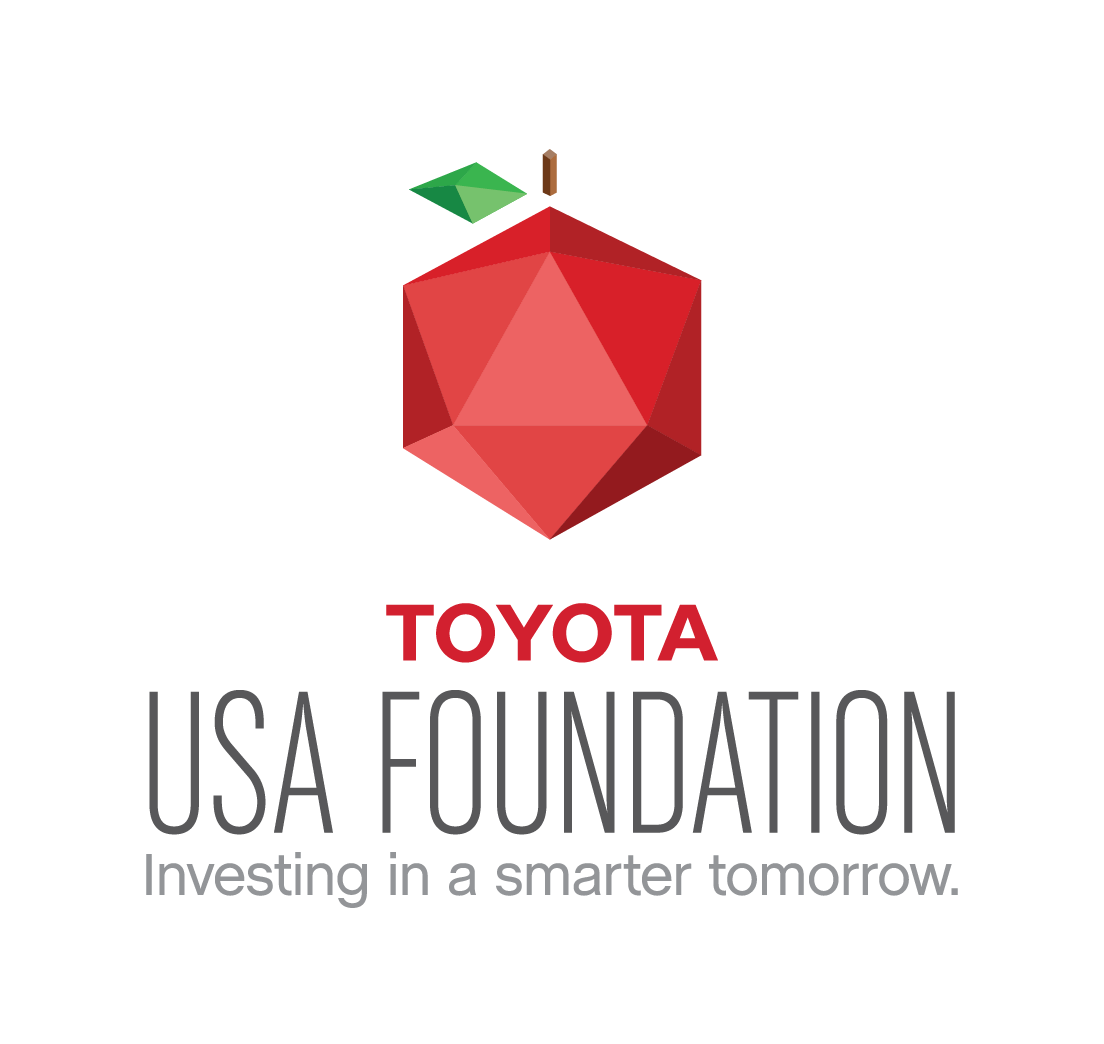High Octane
The game objective is for the teams to collect and employ common molecules (carbon dioxide: CO2; and water: H20) and essential resources (energy, catalysts) to complete a series of chemical reactions. The elements needed for the reactions are distributed about the field and must be captured and returned to the processing plant to be used in the reactions. The eventual goal is to produce isooctane, or alternatively, the lesser valued naphtha. Intermediate products (ethylene, benzene) that are generated in the process are retained in the team’s inventory for later use.
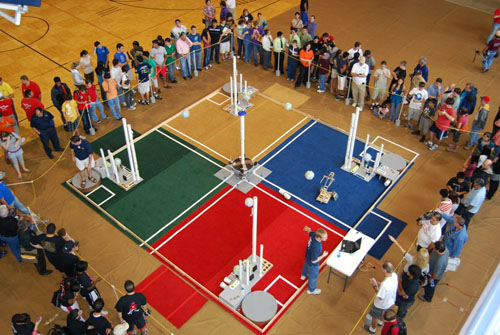
During the seeding competition, teams will collect H20, catalysts, energy, and CO2 in an effort to synthesize ethylene (C2H4) according to the reaction equation:
(1) 2 CO2 + 2 H20 + Energy + Catalyst -> C2H4 + 3 O2 (waste product)
In other words, it takes two CO2 units, plus two H20 units, plus one Energy unit, plus one Catalyst unit to produce a single unit of ethylene and oxygen. In this scenario, oxygen is considered a waste product and does not contribute to the team’s inventory.
After acquiring ethylene through equation (1), or through commodity trading (described later), teams can synthesize benzene (C6H6) through the following equation:
(2) 3 C2H4 + Energy + Catalyst -> C6H6 + 3 H2 (waste product)
Teams can then choose to use the benzene to create either naphtha (C6H14) using equation (3), or the more valuable isooctane (C8H18) by using equation (4).
(3) C6H6 + 4 H2 + Energy + Catalyst -> C6H14
(4) C6H6 + C2H4 + 4H2 + Energy + Catalyst -> C8H18
For equations (3) and (4), water is used as the hydrogen (H2) source.
Teams are not restricted to any one of the above reactions during any stage of the competition event. Teams are free to pursue any of the reactions that their inventory and available reactants/resources might allow them to complete.
The inventory that can be carried from one match to the next is strictly limited. No more than three units of each reactant/resource can be held in inventory from match to match. Components with counts in excess of four will be traded up for the next higher value component. The trading sequence follows the order from right to left in the table that follows.
C8H18 |
C6H14 |
C6H6 |
C2H4 |
CO2 |
Energy |
Catalyst |
H20 |
For example four units of water become one unit of catalyst. The trading sequence occurs after the reaction equations are applied starting with the equation (4) working in reverse order back to equation (1). Multiple reactions and multiple trades can happen when the inventory rules are applied at the end of each match. Inventory is represented using shorthand notation that follows the same sequence as shown in the trading table with the most valuable components on the left and the least valuable components on the right.
The field includes four quadrants (one per team), which each includes a Processing Plant, and surround the centrally located Energy Generation Station (EGS). There are overhead lines (stratosphere) that support the CO2 molecules (blow-up globes). Although robots are allowed to drive anywhere on the field, teams have an advantage in their “home” quadrant since any robot contact that occurs within a team’s home quadrant causes the visiting team’s robot to incur a penalty.
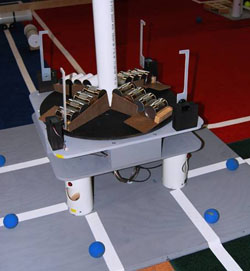 The EGS (right) includes a rotating platform that holds and dispenses energy units (small cans). Either a push-button switch or infrared (IR) sensor can be used to start the rotating platform and cause energy units to be dispensed. The IR commands, which are issued by the robots, allow multiple methods of dispensing energy. Rotation of the EGS platform also causes the CO2 molecules (blow-up globes) suspended from the overhead line to move at a rate of approximately two feet per minute. There are water molecules (racquet balls) located near the legs of the EGS.
The EGS (right) includes a rotating platform that holds and dispenses energy units (small cans). Either a push-button switch or infrared (IR) sensor can be used to start the rotating platform and cause energy units to be dispensed. The IR commands, which are issued by the robots, allow multiple methods of dispensing energy. Rotation of the EGS platform also causes the CO2 molecules (blow-up globes) suspended from the overhead line to move at a rate of approximately two feet per minute. There are water molecules (racquet balls) located near the legs of the EGS.
The Processing Plant (below) includes the machine starting location, the operations platform, a catalyst dispenser, and areas into which the various game elements can be placed to be used for the reactions and inventory trading. There are additional water molecules located near the Processing Plant. Catalysts (tennis balls) are distributed from the dispenser in response to either a push-button switch on the dispenser or in response to IR commands issued at the EGS. The rate in which the catalysts are dispensed depends on when the request was registered with the field, the phase of the competition, and a number of other factors.
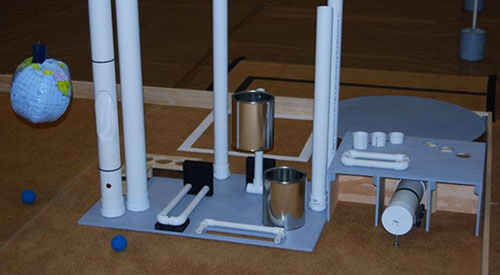
The operator (spotter) is allowed to handle H2O, energy, and catalyst that are placed into the robot starting area and that are no longer in contact with the robot. The robot or the operator can place items into the top storage area of the processing cell. Only the robot can handle CO2 and the Benzene tankers (available after the seeding matches are complete) and only the robot can place items into the processing cell. For inventory trading and reaction purposes, there is no difference between items in the storage area and items in the processing cell. There is also no difference between items placed by the robot and those placed by the operator.
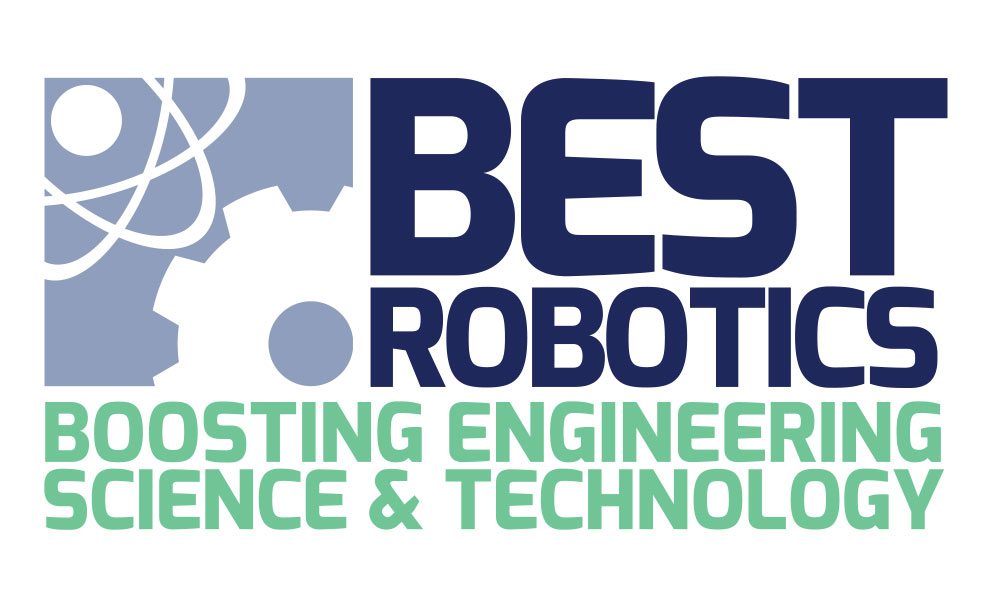
 Announcements
Announcements





